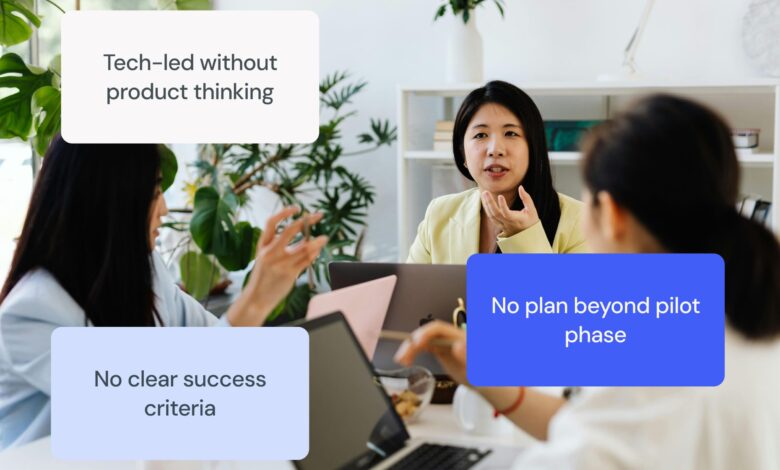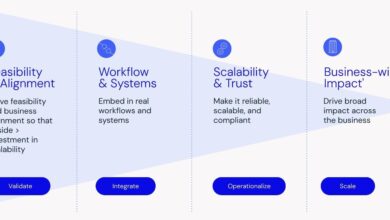4 red flags to watch for when building & scaling your AI proof-of-concept

Many teams rush to innovate and prove their tech works, skipping over organization-wide alignment or understanding the business impact. POCs are framed as “experiments” with vague goals like exploring generative AI or testing out LLMs on our data sets, rather than specific, measurable outcomes. Many AI pilots haven’t moved out of their sandbox because they didn’t solve a real business problem.
Without having a clear definition of success, your team can’t prove value, and therefore make a case for further investment and wide-scale adoption. And you certainly can’t align stakeholders that don’t understand the big picture of what your solution actually solves. Once the demo is done, stakeholders don’t know what to compare it against or whether it warrants further investment. Executive sponsors hesitate. Next steps get deferred. The pilot quietly dies.
Many POCs are built within innovation labs or by data science teams exploring the latest, most exciting technologies. While the technical challenge might be interesting, the business needs must supersede the want to implement a specific model or a tool. The result might be a technically advanced solution that solves a problem no one is urgently trying to solve.
Real value comes not from proving AI works but from embedding it into systems that matter.
Even a brilliant model won’t scale if the rest of the business doesn’t use it. If the problem isn’t high on anyone’s priority list, teams won’t reallocate budgets or workflows to adopt the solution. And if the expected outcomes don’t amount to P&L impact, it will be difficult to make a case for resources on integration or ongoing support.
In many organizations, AI projects are still treated as technical experiments, owned end-to-end by data teams. Product management is brought in only after the model is working and needs scaling. But without a product mindset from the start, it’s easy to build something powerful that no one can or wants to use.
In the early stages, teams are focused on proving feasibility. To move fast, they often cut corners:
AI isn’t plug-and-play. Moving from a working demo to a production-grade solution involves a long tail of decisions:
If the demo was built with brittle shortcuts, these problems are magnified:
Looking to build an AI solution that delivers real business value at scale? Let’s talk.
Amir leads BOI’s global team of product strategists, designers, and engineers in designing and building AI technology that transforms roles, functions, and businesses. Amir loves to solve complex real world challenges that have an immediate impact, and is especially focused on KPI-led software that drives growth and innovation across the top and bottom line. He can often be found (objectively) evaluating and assessing new technologies that could benefit our clients and has launched products with Anthropic, Apple, Netflix, Palantir, Google, Twitch, Bank of America, and others.



